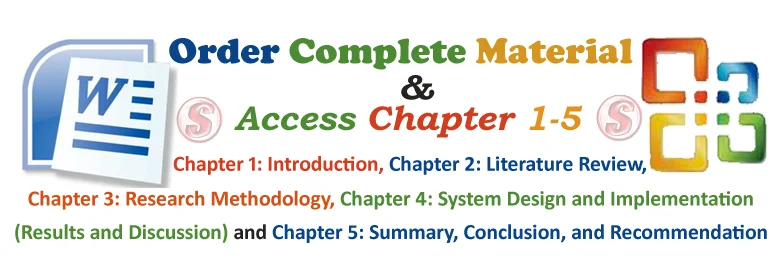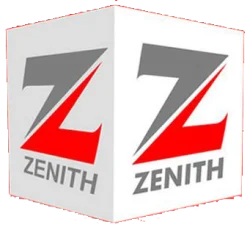1.0 Introduction
1.1 Background of the Study
Working capital refers to the investment which a firm makes in short term assets. Which include cash, account receivable, short term security and inventory. Thus, working capital management presupposes the effective use 0f these assets to ensure increased profitability in a firm.
According to Nwachukwu (2010), working capital can be described as the difference between the inflow and outflow of funds. It is a financial metric which represent operation liquidity available to a business. It is calculated as current assets minus current liabilities. If current assets are less than current liabilities, a business or entity has a working capital deficiency of deficit. In other words, it is the capital requires by a firm from day to day running of the business.
A portion of the investment in current assets is financial by current liabilities such as traitors, bill payable, bank overdraft etc. therefore assets and current liabilities.
The liquidity positions of many banks are of fundamental importance. The concept of working capital management in money deposit banks and its operation become relevant in the growth and profitability of many banks. The management policies and decision are giving due consideration in its. Working capital position in order to insure increase in financial analysis and has long been recognized for instance, the American institute of certificate public According (ALCPA) in 1936 officially recognized the importance of capital to the creditors as a rule, a creditor is more concerned in the liquidity of a business organization, the nature and the adequacy of its working capital, thereby requiring the details of the current assets and current liability.
Working capital has also gained attention because of the statement of accounting standard No. 2 (issued by Nigerian accounting standard board and international accounting standard committed which recommend the presentation of funds flow statement that highlight movement in working capital as an integral part of a company's published financial statement.
Working capital management enhanced the administrative control of current assets, utilization of short term financing through various current liabilities sources and the control of the amount of new working capital so as to ensure profitability.
1.2 Statement of the Problems
Most of t he work dealing with working capital management is combined in the balanced sheet, where the current assets are isolated from the current liabilities from the overall valuation of the firm. Hence this work, working capital in money deposit banks (A case study of Union Bank Plc and Eco Banking Plc) shall appoint the danger in;
- Excessive investment in current assets ties down cash which would have been profitably invested for increase in profit.
- Inadequate investment in current assets predisposes the firm from insolvency.
- Taking irrational decision on working capital by management the profitability of the banks.
1.3 Objectives of Study
The objective of this research work is to look into the applicability of working capital in money deposit banks and thereby assessing the performance of these banks under such management technologies.
The objectives include:
- To know whether an increase in working capital will generate an increase in the profitability of these banks Union bank Plc and Eco Bank Plc).
- To suggest the extent to which working capital needs may be financed by permanent sources of found
- To asses the process involved in the management of the component that make up the working capital i.e stock cash marketable services creditors.
1.4 Research Questions
These are ideas or suggestion that is based on known facts and is used as a base for reasoning or further investigation it is way of assuring a work which may not be necessarily true or real.
It is a theory to be proved or disproved by reference to facts in the coursed of this study, the following researcher questions are stated thus.
- Does increase in working capital will generate an increase in the profitability of these banks Union bank Plc and Eco Bank Plc).
- Is there any process involved in the management of the component that make up the working capital i.e stock cash marketable services creditors.
- Does bad management of working capital dispose your bank to insolvency?
- Does Excessive investment in working capital affects the profitability of the banks.
1.5 Statement of Hypothesis
The hypothesis would either be accepted or reflect based on these problems statement the researcher proceeds to formula the following hypothesis which will be test is the course of study.
- H0: bad management does not of working capital dispose your bank to insolvency?
- H1 : bad management of working capital dispose your bank to insolvency
- H0: Excessive investment in working capital does not affects the profitability of the banks.
- H1: Excessive investment in working capital affects the profitability of the banks.
1.6 Significance of the Study
The need for working capital to run the day to day activities of the company cannot be overstressed there is hardly a business firm which does not require sufficient level of working capital. For instance, a small firm can minimize investment in fixed assets by renting or leasing plant and equipment but there is no way it can avoid an investment in cash receivable and inventories.
1.7 Scope of the Study
The area covered by this research work is mainly on the management of current asset and current liabilities in Money deposit banks.
Namely: working capital management if Union Banks Plc and Eco Bank Plc writing Owerri Imo State shall be visited for collection of primary data and emphasis will be laid based on the information received.
1.8 Limitation of the Study
Based on the research carried the researcher is assumed that with the development of work in work capital management it will be easier and faster.
The researcher also assumed that the help of working capital in deposit money bank will enhance a great impact in the banking industry.
Furthermore, it is assumed that working capital in deposit money banks will have a well strong relationship with central bank of organization.
1.9 Definition of Terms
Some of the terms are broken down for an in-depth knowledge of this research work. These terms are as following:
1) Capital:
Money set aside for the running of a business or an investment.
2) Receivable:
This is bill showing that is owned to a business.
3) Management:
The process of organization both human and material resources to facilitate the achievement.
4) Inventories:
Goods in the business which have not be converted to cash.
5) Hypothesis:
Explanation based on a few known facts that have not yet been provide to be true or correct.
6) Cash:
Money at hand or in the bank for t he running of business
7) Liability:
As amount of money that a company own commercial services. Services rendered to general public for purpose of making profit.
8) Marketing Securities:
These are near money assets of a firm.
9) Working Capital:
This refers to the investment which a firm makes in short terms assets.
10) Stock:
This refers to goods hold by a business for the purpose of resale
11) Credit Analysis:
Is the process of assessing the risk of lending to a business or an individual.
12) Balance Sheet Management:
is concern with coordinated management of the entire balance sheet and its intern relationship.
13) Assets and Liabilities Management:
Is the act to present change sin the economic.
14) Credit Risk:
Is risk that borrowers of bank funds management not eventually repay.
15) Banker's Acceptances:
These are highly marketable short term money market instruments that re used primarily to finance international trade.
16) Bank Lending:
Can be define as the transfer of resources of the bank to the various economic units of the economy though loans, overdrafts, discounting of trade bill.
17) E-Banking:
Is the ware of the future which provided enormous befits to consumers in terms of the case and cost of transition.
18) Depart Money:
Are business entities established for profit and owned by shareholders
19) Liquidity Risk:
is a coat of different colors. It also arise when a bank is unable to meet maturity commitments and Obligations or is unable to undertake new transaction.
20) Securities and Exchange Commissions:
Is a government agency mandated to regulated and develop the Nigerian capital market
21) Bank:
A Bank is a financial house establishment for the purpose of accepting deposit and lending out funds in addition to other services.
22) Cheques:
A cheques is bill of exchange draw on a banker payable on demand.
23) Taxation:
Is the requirement by government that a compulsory payment be made to her by rendered to the pay.
24) Finance:
A branch of economic concerned with mothers related to meant and the markets
25) Business Risk:
To inability of the inventors to predict the outcome of business nature with its attendant variations in the rate of return gives rise to this types of risk.




